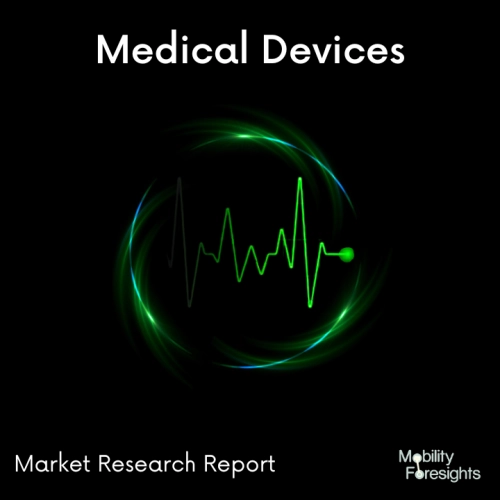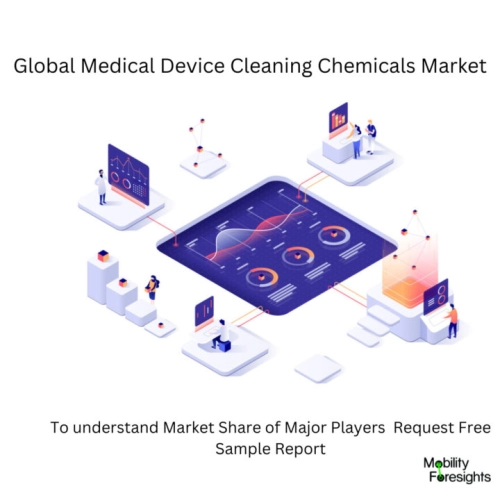
- Get in Touch with Us

Last Updated: Apr 25, 2025 | Study Period: 2023-2030
In use areas without mechanical units (like ultrasonic cleaners or washer-disinfectors), as well as for instruments that are delicate or difficult to clean, cleaning is done manually.
Fluidics and friction are the two essential components of manual cleaning. A tried-and-true method is friction, like rubbing or scrubbing the soiled area with a brush.
After brushing and when the design prevents a brush from passing through a channel, fluidics, or fluids under pressure, are utilized to remove soil and debris from internal channels. When using a washer-disinfector, instruments should be loaded with care.
A detergent solution with a pH that is neutral or close to neutral is typically used for instrument cleaning because these solutions typically provide the best material compatibility profile and good soil removal.
For the purpose of assisting in the removal of organic matter, neutral pH solutions may occasionally contain enzymes, typically proteases. These formulations' enzymes attack proteins, which make up a lot of common soil (like blood and pus).
Additionally, lipases and amylasesâenzymes that are active on starchesâmay be present in cleaning solutions. Enzymatic cleaners are not disinfectants, and germicides can inactivate proteinaceous enzymes.
Enzymes, like all chemicals, must be rinsed out of the equipment to avoid adverse reactions like fever, high-level disinfectant residue, or proteinaceous residue.
Utilizing enzyme solutions in accordance with the manufacturer's instructions necessitates proper dilution of the enzymatic detergent and contact with equipment for the labeled duration.
Users of detergent enzymes may develop asthma or other allergic reactions. Detergent solutions with a neutral pH and enzymes are best for cleaning flexible endoscopes and other delicate medical instruments because they are compatible with metals and other materials used in medical instruments.

The Global Medical device Cleaning Chemicals market accounted for $XX Billion in 2022 and is anticipated to reach $XX Billion by 2030, registering a CAGR of XX% from 2023 to 2030.
IPC Cleanerproducts have long been used in pre-sanitization washes of implantable medical devices and prosthetics such as knees, hips, pins, screws, and tubing. Machining oils, burrs, metal fines, and other soils are easily removed from stainless steel, titanium, ceramic and other metal and plastic surfaces.
Line of cleaners can deliver the critical/precision cleaning needed to meet the most rigorous specifications for cleanliness. All of the cleaners are NSF registered as USDA-A1 Cleaners and can be validated in FDA processes. Validation methods and health and safety data are available upon request.
All cleaners are free of solvents, phosphates, silicates, phenols, and Substances of Very High Concern. Laboratory research shows: To ensure an effective sanitization of equipment, it is essential for the surfaces to be thoroughly cleaned first.
| Sl no | Topic |
| 1 | Market Segmentation |
| 2 | Scope of the report |
| 3 | Abbreviations |
| 4 | Research Methodology |
| 5 | Executive Summary |
| 6 | Introduction |
| 7 | Insights from Industry stakeholders |
| 8 | Cost breakdown of Product by sub-components and average profit margin |
| 9 | Disruptive innovation in the Industry |
| 10 | Technology trends in the Industry |
| 11 | Consumer trends in the industry |
| 12 | Recent Production Milestones |
| 13 | Component Manufacturing in US, EU and China |
| 14 | COVID-19 impact on overall market |
| 15 | COVID-19 impact on Production of components |
| 16 | COVID-19 impact on Point of sale |
| 17 | Market Segmentation, Dynamics and Forecast by Geography, 2023-2030 |
| 18 | Market Segmentation, Dynamics and Forecast by Product Type, 2023-2030 |
| 19 | Market Segmentation, Dynamics and Forecast by Application, 2023-2030 |
| 20 | Market Segmentation, Dynamics and Forecast by End use, 2023-2030 |
| 21 | Product installation rate by OEM, 2023 |
| 22 | Incline/Decline in Average B-2-B selling price in past 5 years |
| 23 | Competition from substitute products |
| 24 | Gross margin and average profitability of suppliers |
| 25 | New product development in past 12 months |
| 26 | M&A in past 12 months |
| 27 | Growth strategy of leading players |
| 28 | Market share of vendors, 2023 |
| 29 | Company Profiles |
| 30 | Unmet needs and opportunity for new suppliers |
| 31 | Conclusion |
| 32 | Appendix |